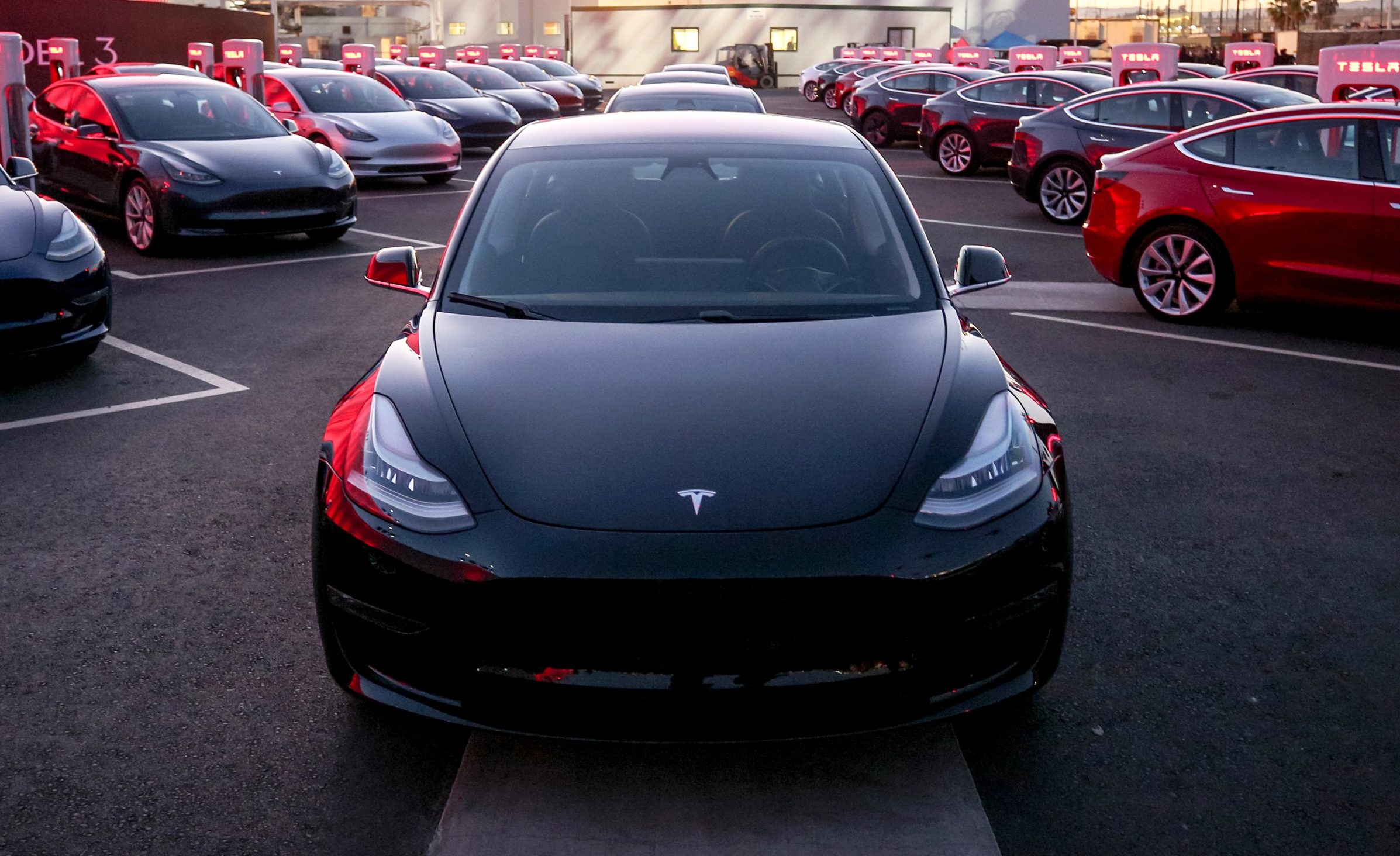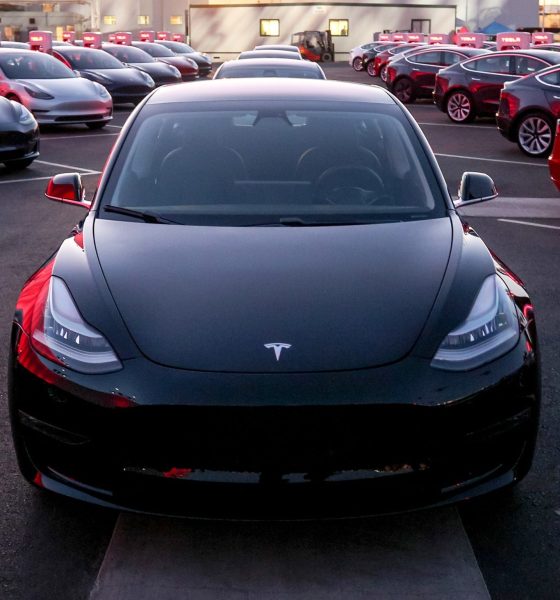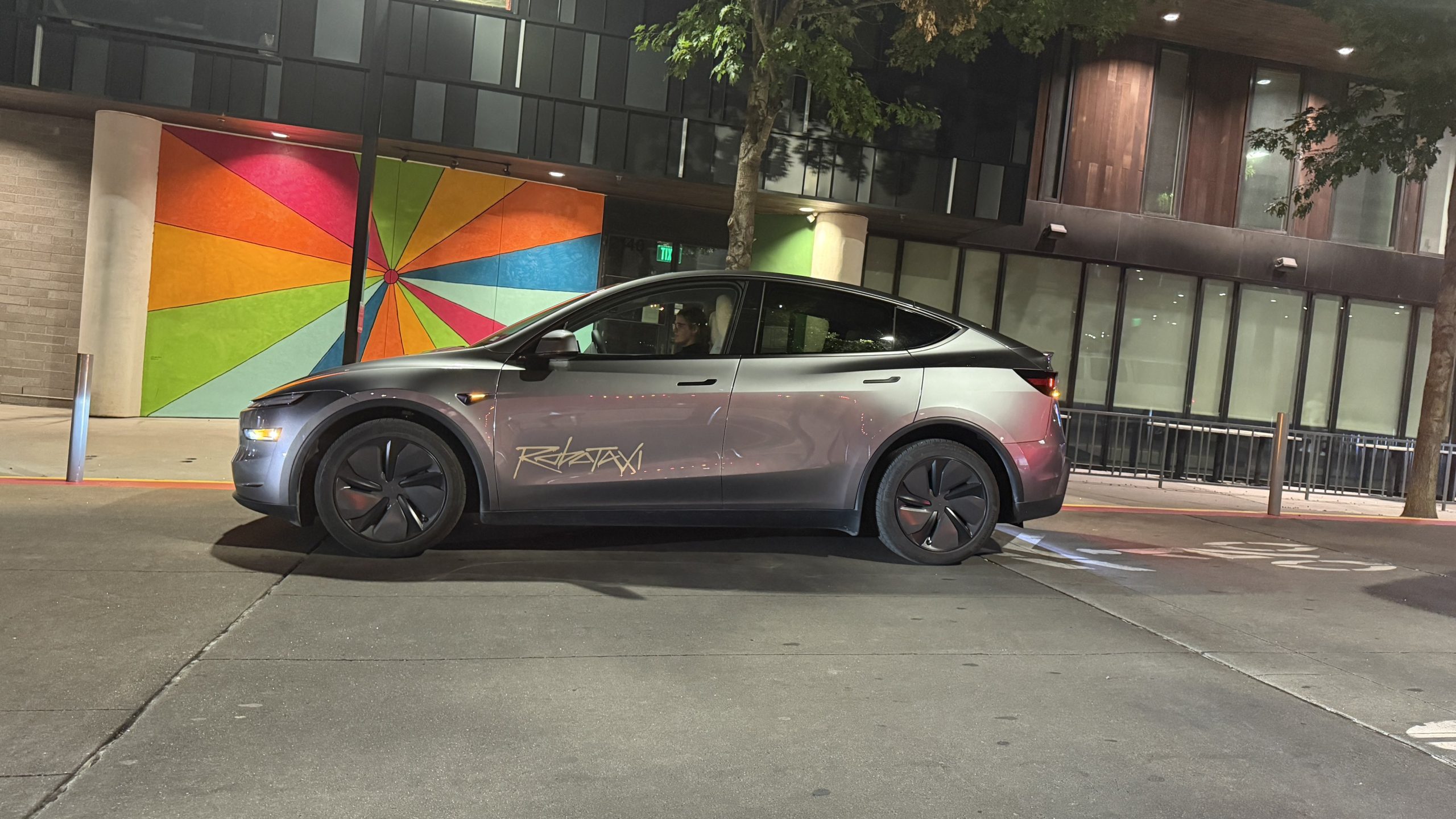

Investor's Corner
Tesla dips amid ‘meager’ Model 3 demand claims despite TSLA’s China, Europe push
Tesla stock (NASDAQ:TSLA) dropped to nearly 5-month lows on Monday, trading as low as $256.02 per share, the lowest since October 22, 2018. The drop in the electric car maker’s shares transpired amidst Wall St’s continued concerns over alleged Model 3 demand issues and Elon Musk’s recent initiative to raise the price of Tesla’s inventory vehicles by ~3%.
RBC analyst Joseph Spak recently cut his price target for Tesla shares by $35 to $210 each in a note published on Monday. Spak trimmed his Q1 2019 Model 3 delivery forecasts to 52,500. This number is 4,500 less than Spak’s previous estimates over what he cited as “meager demand” for the electric sedan. Apart from Spak, JMP Securities analyst Joseph Osha lowered his price target for Tesla by 3% to $394 per share. Osha cites the US market’s weakness and Tesla’s closing of its galleries as among the drivers behind his more conservative stance, though the analyst noted that JMP continues to believe in Tesla’s long-term narrative.
“As we have moved through the first part of 2019, it is becoming apparent that Tesla’s efforts to pull demand into 4Q before the federal tax credit expired worked well, perhaps better than the company had planned. Indeed, based on our analysis we are not sure that U.S. demand will return to 4Q18 levels at any point this year. It is worth reiterating that our investment stance on Tesla has always been based on the potential the company has to make competitive gains over time. The undeniably challenging environment that Tesla faces at the moment is not enough to impact our fundamental stance on the company and its prospects,” Osha wrote.
Concerns about the Model 3’s weakening demand might be overblown, especially considering that Tesla is currently focusing its push for the vehicle in territories outside the United States. This is a key point that seems to be neglected in recent mainstream analysis of the company’s strategy this quarter, as revealed in a recent piece on Model 3 demand from The New York Times. Citing new-car registrations compiled by the Dominion Cross-Sell Report, which concluded that new Tesla registrations “fell significantly” in the 23 US states covered in the report, the publication suggested that the numbers are a worrisome sign for the electric car maker.
While the NYT‘s hypothesis with Tesla’s lower registrations in the US should not be discounted, the company’s lower registration numbers could be explained by Tesla simply not delivering as many vehicles in the United States this quarter compared to Q4 2018. Since January, Tesla has been pushing the Model 3 to Europe and China, two markets that have been waiting for the electric sedan. This is a notable contrast to Tesla’s strategy in the fourth quarter, when all of its production and deliveries were focused in North America. Until Tesla reveals its delivery figures in Europe and China on its Q1 2019 production and delivery report, it seems too early to make assumptions about the sedan’s overall demand, or lack thereof.
To be clear, this doesn’t affect Tesla website order prices. Existing inventory prices are currently slightly lower than on website. This will bring them in line.
— Elon Musk (@elonmusk) March 24, 2019
Tesla is nearing the end of Q1 2019, and the company is putting all hands on deck. A recently shared email from Elon Musk has revealed that the CEO is urging the company’s employees to shift their focus on delivering cars to customers, regardless of their role. Musk was optimistic in his message, stating “This is the biggest wave in Tesla’s history, but it is primarily a function of our first delivery of mass manufactured cars on two continents simultaneously, and will not be repeated in subsequent quarters.” Musk has also announced that Tesla is increasing the price of inventory cars worldwide by ~3% on April 1. The changes would not be affecting the current prices of Tesla’s existing vehicles, and is only intended to bring the costs of inventory cars in line.
As of writing, Tesla shares are starting to recover, trading down 1.18% at $261.41 per share.
Disclosure: I have no ownership in shares of TSLA and have no plans to initiate any positions within 72 hours.

Investor's Corner
Tesla analyst maintains $500 PT, says FSD drives better than humans now
The team also met with Tesla leaders for more than an hour to discuss autonomy, chip development, and upcoming deployment plans.

Tesla (NASDAQ:TSLA) received fresh support from Piper Sandler this week after analysts toured the Fremont Factory and tested the company’s latest Full Self-Driving software. The firm reaffirmed its $500 price target, stating that FSD V14 delivered a notably smooth robotaxi demonstration and may already perform at levels comparable to, if not better than, average human drivers.
The team also met with Tesla leaders for more than an hour to discuss autonomy, chip development, and upcoming deployment plans.
Analysts highlight autonomy progress
During more than 75 minutes of focused discussions, analysts reportedly focused on FSD v14’s updates. Piper Sandler’s team pointed to meaningful strides in perception, object handling, and overall ride smoothness during the robotaxi demo.
The visit also included discussions on updates to Tesla’s in-house chip initiatives, its Optimus program, and the growth of the company’s battery storage business. Analysts noted that Tesla continues refining cost structures and capital expenditure expectations, which are key elements in future margin recovery, as noted in a Yahoo Finance report.
Analyst Alexander Potter noted that “we think FSD is a truly impressive product that is (probably) already better at driving than the average American.” This conclusion was strengthened by what he described as a “flawless robotaxi ride to the hotel.”
Street targets diverge on TSLA
While Piper Sandler stands by its $500 target, it is not the highest estimate on the Street. Wedbush, for one, has a $600 per share price target for TSLA stock.
Other institutions have also weighed in on TSLA stock as of late. HSBC reiterated a Reduce rating with a $131 target, citing a gap between earnings fundamentals and the company’s market value. By contrast, TD Cowen maintained a Buy rating and a $509 target, pointing to strong autonomous driving demonstrations in Austin and the pace of software-driven improvements.
Stifel analysts also lifted their price target for Tesla to $508 per share over the company’s ongoing robotaxi and FSD programs.
Investor's Corner
Tesla wins $508 price target from Stifel as Robotaxi rollout gains speed
The firm cited meaningful progress in Tesla’s robotaxi roadmap, ongoing Full Self-Driving enhancements, and the company’s long-term growth initiatives.

Tesla received another round of bullish analyst updates this week, led by Stifel, raising its price target to $508 from $483 while reaffirming a “Buy” rating. The firm cited meaningful progress in Tesla’s robotaxi roadmap, ongoing Full Self-Driving enhancements, and the company’s long-term growth initiatives.
Robotaxi rollout, FSD updates, and new affordable cars
Stifel expects Tesla’s robotaxi fleet to expand into 8–10 major metropolitan areas by the end of 2025, including Austin, where early deployments without safety drivers are targeted before year-end. Additional markets under evaluation include Nevada, Florida, and Arizona, as noted in an Investing.com report. The firm also highlighted strong early performance for FSD Version 14, with upcoming releases adding new “reasoning capabilities” designed to improve complex decision-making using full 360-degree vision.
Tesla has also taken steps to offset the loss of U.S. EV tax credits by launching the Model Y Standard and Model 3 Standard at $39,990 and $36,990, Stifel noted. Both vehicles deliver more than 300 miles of range and are positioned to sustain demand despite shifting incentives. Stifel raised its EBITDA forecasts to $14.9 billion for 2025 and $19.5 billion for 2026, assigning partial valuation weightings to Tesla’s FSD, robotaxi, and Optimus initiatives.
TD Cowen also places an optimistic price target
TD Cowen reiterated its Buy rating with a $509 price target after a research tour of Giga Texas, citing production scale and operational execution as key strengths. The firm posted its optimistic price target following a recent Mobility Bus tour in Austin. The tour included a visit to Giga Texas, which offered fresh insights into the company’s operations and prospects.
Additional analyst movements include Truist Securities maintaining its Hold rating following shareholder approval of Elon Musk’s compensation plan, viewing the vote as reducing leadership uncertainty.
@teslarati Tesla Full Self-Driving yields for pedestrians while human drivers do not…the future is here! #tesla #teslafsd #fullselfdriving ♬ 2 Little 2 Late – Levi & Mario
Investor's Corner
Tesla receives major institutional boost with Nomura’s rising stake
The move makes Tesla Nomura’s 10th-largest holding at about 1% of its entire portfolio.

Tesla (NASDAQ:TSLA) has gained fresh institutional support, with Nomura Asset Management expanding its position in the automaker.
Nomura boosted its Tesla holdings by 4.2%, adding 47,674 shares and bringing its total position to more than 1.17 million shares valued at roughly $373.6 million. The move makes Tesla Nomura’s 10th-largest holding at about 1% of its entire portfolio.
Institutional investors and TSLA
Nomura’s filing was released alongside several other fund updates. Brighton Jones LLC boosted its holdings by 11.8%, as noted in a MarketBeat report, and Revolve Wealth Partners lifted its TSLA position by 21.2%. Bison Wealth increased its Tesla stake by 52.2%, AMG National Trust Bank increased its position in shares of Tesla by 11.8%, and FAS Wealth Partners increased its TSLA holdings by 22.1%. About 66% of all outstanding Tesla shares are now owned by institutional investors.
The buying comes shortly after Tesla reported better-than-expected quarterly earnings, posting $0.50 per share compared with the $0.48 consensus. Revenue reached $28.10 billion, topping Wall Street’s $24.98 billion estimate. Despite the earnings beat, Tesla continues to trade at a steep premium relative to peers, with a market cap hovering around $1.34 trillion and a price-to-earnings ratio near 270.
Recent insider sales
Some Tesla insiders have sold stock as of late. CFO Vaibhav Taneja sold 2,606 shares in early September for just over $918,000, reducing his personal stake by about 21%. Director James R. Murdoch executed a far larger sale, offloading 120,000 shares for roughly $42 million and trimming his holdings by nearly 15%. Over the past three months, Tesla insiders have collectively sold 202,606 shares valued at approximately $75.6 million, as per SEC disclosures.
Tesla is currently entering its next phase of growth, and if it is successful, it could very well become the world’s most valuable company as a result. The company has several high-profile projects expected to be rolled out in the coming years, including Optimus, the humanoid robot, and the Cybercab, an autonomous two-seater with the potential to change the face of roads across the globe.
@teslarati Tesla Full Self-Driving yields for pedestrians while human drivers do not…the future is here! #tesla #teslafsd #fullselfdriving ♬ 2 Little 2 Late – Levi & Mario








